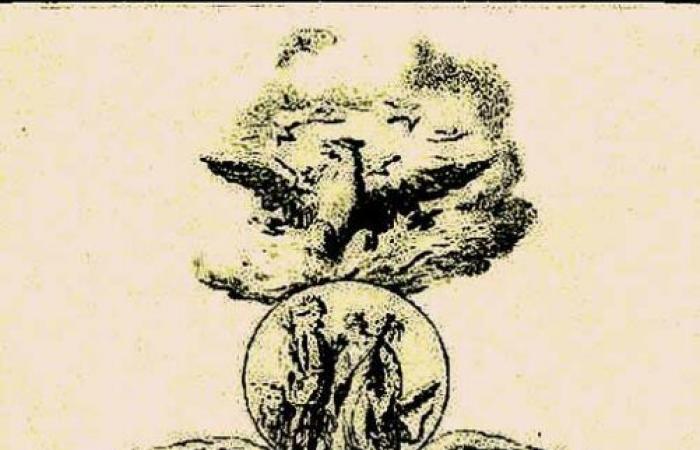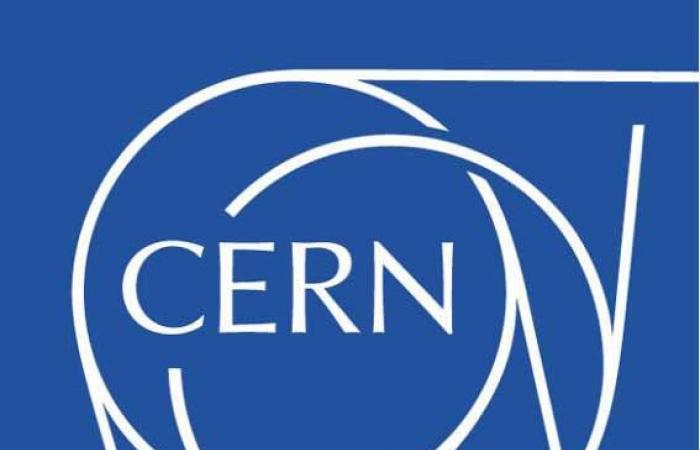With our colleagues francetvinfo.fr and 20min.ch
A fascinating announcement has shaken the scientific world: CERN physicists, the European organization for nuclear research based in Geneva, managed to transform lead into gold. This feat, although limited to a tiny fraction of a second, marks a symbolic stage in the history of science, realizing a millennial dream of alchemists. However, beyond the technical feat, this discovery invites us to revisit the myth of alchemy, not only in its literal sense, but also in its symbolic and spiritual dimension, in particular through the speculative alchemy of Freemasons.
Ephemeral scientific transmutation in CERN

According to the information published, the CERN teams used the great collision of Hadrons (LHC), an accelerator of particles of 27 kilometers in circumference, to carry out this transmutation. The process is based on complex manipulation of the atomic structure:
Lead, which contains 82 protons, must lose three to become gold, which has 79.
The researchers accelerated lead atoms at a speed close to that of light, causing quasi-collings that generate intense electromagnetic fields. These fields, described as “flattened as a pancake” by the CERN, trigger an electromagnetic dissociation, during which a lead atom ejects some protons. When he loses three, he briefly turns into gold.
However, this transformation is far from resembling the dreams of wealth of medieval alchemists.
The gold produced only exists during a fraction of a second before fragmenting in smaller particles, like protons and neutrons, when it strikes the walls of the LHC beam tube.
In addition, the quantity generated is tiny: between 2015 and 2018, only a few tens of golden peak have been created, trillions of times less than what would be necessary to make a jewel. This discovery, although spectacular on the scientific level, therefore has no practical application to produce large -scale gold. It nevertheless illustrates the extraordinary advances in particle physics and our ability to manipulate matter at a fundamental level, a feat that would have been unimaginable only a century ago.
-The myth of alchemy: a millennial quest

This scientific breakthrough inevitably brings back to mind the myth of alchemy, a practice which, for centuries, fascinated the spirits in search of knowledge, wealth and immortality. From antiquity, in Greco-Roman Egypt, in China and India, the alchemists sought to discover the philosopher’s stone, a legendary artifact supposed to have extraordinary powers. This stone, sometimes described as a substance or esoteric knowledge, was supposed to transmute vile metals, like lead, in noble metals, like gold. But her promises did not stop there: she was also considered a universal panacea, capable of curing all evils, and as a long -lived elixir, conferring immortality or invisibility to those who master it.

Mythical figures like Hermès Trismégiste, Paracelse or Nicolas Flamel have embodied this alchemical quest, mixing science, philosophy and mysticism. At a time when modern chemistry did not yet exist, alchemists were experimenting in their laboratories, manipulating substances like mercury, sulfur or lead in horns, hoping to discover the secret of transmutation. If their efforts to literally transform lead into gold have failed, alchemy nevertheless laid the foundations of modern chemistry, with discoveries such as sulfuric acid, antimony or phosphorus. However, its occult drifts and its inability to produce concrete results ended up discrediting it in the eyes of the emerging science of the Enlightenment.
With the advent of nuclear physics in the 20th century, the dream of alchemists became technically achievable, but at a prohibitive cost and without economic viability. Glenn Seaborg, winner of the Nobel Prize in chemistry in 1951, had already managed to transmute small quantities of gold bismuth in 1980, using an accelerator of particles. Today, CERN has taken up this torch, proving that transmutation is possible, but also confirming its practical limits. Ironically, this scientific achievement gives reason to the alchemists on the principle, while showing that their material quest was doomed to failure in the conditions of their time.
Symbolic alchemy: a spiritual quest

Beyond the literal transmutation of metals, alchemy has always carried a symbolic and spiritual dimension, which finds a particular echo in Masonic traditions. For many alchemists, the transformation of lead into gold was not only a material process: it represented a metaphor for inner transformation, a spiritual journey towards perfection. Lead, heavy metal, gray and dull, symbolized the raw state of the human soul, marked by ignorance, vices and imperfections. Gold, noble metal, luminous and unalterable, represented the purified soul, illuminated by wisdom, virtue and knowledge. The quest for the philosopher’s stone thus became a quest for enlightenment, an attempt to transcend the limits of the human condition to reach a state of spiritual perfection.

This symbolic alchemy, often called spiritual alchemy, has deeply influenced esoteric traditions, notably Freemasonry. Freemasons, who consider themselves ” builders Both material and spiritual, integrated this alchemical metaphor into their rituals, their symbols and their philosophy. In Freemasonry, the process of transforming lead into gold is interpreted as an allegory of initiatory work: the mason, through its career, seeks to polish its “raw stone”-symbol of its initial, imperfect-to make it a “cubic stone”-symbol of perfection and harmony. This work, which involves studying, reflection, rituals and fraternal commitment, aims to transform the individual, to make him wiser, more tolerant and more enlightened.
The speculative alchemy of Freemasons

In Freemasonry, this symbolic alchemy takes a speculative form, that is to say that it focuses on reflection and inner quest rather than material experiences. Masons do not seek to literally transform lead into gold, but to operate a moral and spiritual transformation, both at the individual and collective level. Masonic tools, such as square, compass or mallet, are used as symbols of this work: the square represents righteousness and justice, the compass the open-mindedness and the quest for the ideal, and the mallet constant effort to shape and improve yourself.

Masonic rituals, rich in alchemical symbols, reflect this quest for transformation. For example, the passage of the mason of the state of learning to that of companion, then of Master, is often compared to the three main stages of alchemy: Nedédo (the work in the black, which symbolizes purification and confrontation with interior darkness), the Albedo (the work with white, which represents illumination and purification), and the Rubedo (the work of red, damage to perfection). These stages, although symbolic, are lived in a concrete way through rituals, meditations and exchanges in lodge, where masons learn to overcome their faults, to cultivate virtues and to rise spiritually.
The speculative alchemy of Freemasons also extends to a collective dimension. By advocating values such as fraternity, tolerance and the quest for truth, Freemasonry aspires to transform society itself, to make humanity a more harmonious and fairer “building”. This vision resonates with the alchemical ideal of a perfect world, where divisions and conflicts would be transcended by the light of wisdom and fraternal love. Thus, Freemasonry, like spiritual alchemy, sees in the transformation of lead into gold a metaphor for the construction of a better world, a world where ignorance, hatred and selfishness would be replaced by knowledge, compassion and solidarity.
A bridge between science and symbolism

The CERN feat, briefly transforming lead into gold, acts as a bridge between modern science and the ancestral aspirations of the alchemists. On the one hand, it shows that transmutation, formerly considered as a myth, is technically possible thanks to the advances in particle physics. On the other hand, he reminds us that the alchemical quest has never been only material: it carried in it a spiritual dimension, an aspiration for perfection and unity, which continues to inspire traditions such as Freemasonry.

Today, while CERN pushes the limits of our understanding of matter, Freemasonry, through its speculative alchemy, invites us to pursue another form of quest: that of interior and collective transformation. Transforming lead into gold is perhaps, basically, transforming our hearts and our societies, by replacing the heaviness of ignorance with the light of wisdom and fraternity. In this perspective, the dream of alchemists, far from being a chimera, remains a timeless source of inspiration, a call to tend towards light, in every sense of the word.














